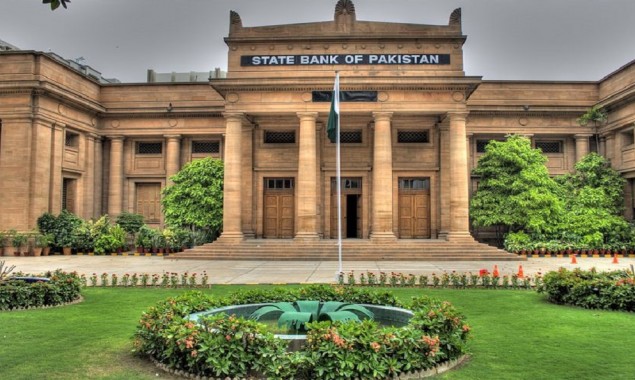
The data showed the import of goods for the quarter July-September 2021/22 at $17.47 billion, while the Pakistan Bureau of Statistics (PBS) revealed that the import bill of the country was $18.74 billion for the quarter under review. Photo: File
KARACHI: The State Bank of Pakistan (SBP) has launched a gender mainstreaming policy titled “Banking on Equality: Reducing the Gender Gap in Financial Inclusion”, which aims at reducing the gender gap in financial inclusion and improving women’s access to financial services.
President Dr Arif Alvi unveiled the policy in an event held at the Aiwan-e-Sadr.
In his remarks, the president said the government of Pakistan recognises women’s financial inclusion as a key driver for achieving sustainable and inclusive economic growth of the country.
President Alvi said that it is the government’s declared policy to promote women‘s inclusion by providing equitable opportunities for access to financial services to all segments of the population and the SBP’s BoE Policy will be instrumental for achieving this goal.
He applauded the central bank’s efforts and expressed the hope that the Banking on Equality Policy would help mainstream women’s financial inclusion agenda as part of the financial institutions strategic priorities through binding targets.
In line with the ethos of our founder, the government’s flagship Ehsaas programme initiative incorporates Prime Minister Imran Khan’s vision of “One woman, One Bank Account Policy” to empower women through financial inclusion, he said.
In his address of welcome, SBP Governor Dr Reza Baqir said that reducing gender gap in financial inclusion has remained a priority for the central bank as mainstreaming the role of women has widespread benefits at social, economic and financial levels for the entire country.
Towards this end, the first step is to improve women’s empowerment by giving them access to entrepreneurial opportunities through having a formal bank account.
Baqir said that advancements in branchless banking have played a significant role in improving access to finance for the people from various socioeconomic backgrounds, without the added cost of setting up brick and mortar structures.
As a result, as of December 2020, 62 per cent of adults have a bank account, showing a significant growth from 45 per cent in 2017. Under the National Financial Inclusion Strategy (NFIS), a target was set to ensure that at least 20 million women must have an active bank account by 2023.
However, despite the overall growth in financial inclusion, the gender gap continued to persist.
He said as of December 2020, only 14.5 million active accounts are owned by women, compared with 38.7 million active accounts owned by men.
Governor Baqir said that the SBP has recently introduced a customers’ digital onboarding framework for the banks, which allows the bank account opening through digital means without the need to visit a bank branch and with simplified documentary requirements.
The framework provides a convenient way of account opening, among others, for self-employed or unemployed women, freelancers, and recipients of remittances from abroad digitally with minimum documentation requirements.
He showed confidence that this initiative would also help achieve the SBP’s financial inclusion objectives by bringing the excluded segments of the society into the formal banking sector.
SBP deputy governor Sima Kamil said that women, especially in Pakistan, face distinct obstacles in accessing formal financial services.
While explaining the policy features, she highlighted the BoE policy is the first gender mainstreaming policy for the financial sector, which will introduce a gender lens in policies and practices.
The policy identifies five key pillars: improving gender diversity in the financial institutions and their access points; development and marketing of women-centric products and services; creating women desks at the bank branches for improved facilitation for women customers; robust collection of gender-disaggregated data and target setting; and institutionalising a Policy Forum on Gender at the SBP.
Accordingly, specific targets have been allocated. The financial institutions are required to increase women employees’ ratio in the workforce to at least 20 per cent by December 2024. To improve women-to-women dealings at retail level, the branchless banking providers would be instructed to increase the ratio of women branchless banking agents to 10 per cent in their agent portfolios.
Similarly, dedicated and trained women champions would be placed at 75 per cent of all the banks to help guide women customers by June 2024.
Moreover, all the banks will give gender sensitivity training to their staff, both men and women, to eliminate implicit gender biases and improve their understanding of the requirements of women customers.
Catch all the Business News, Pakistan News, Breaking News Event and Latest News Updates on The BOL News
Download The BOL News App to get the Daily News Update & Follow us on Google News.




